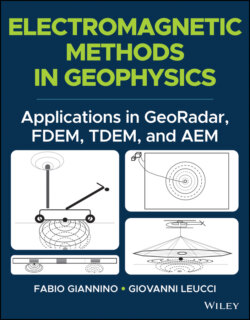Читать книгу Electromagnetic Methods in Geophysics - Fabio Giannino - Страница 14
1 Introduction
ОглавлениеThe framework of the following pages is structured into three sections. In the first section, the theoretical basis on which the GPR, FDEM, TDEM, and AEM techniques are founded, shall be illustrated without entering into the very deep physical and mathematical aspects, which are beyond the purposes of this text. However, the theoretical aspects shall be treated with a detail allowing the Reader to have a sufficient familiarity with those features that makes the methods themselves particularly suitable for specific applications. This will also allow the reader to comprehend how the EM instruments are built by the manufacturer, worldwide. This specific aspect is treated in the second section, where the system’s hardware architecture is illustrated, as well as showing how the instrumentation is designed and manufactured with the aim of maximizing the capability to detect the variation of physical properties of the subsoil, down to a given depth.
Also in the same second sections, all the aspects connected with the design of a survey campaign related to the EM methods will be analyzed, in order to reach the best achievable compromise between the client’s requirements and technical specifications, the survey area’s logistics, the available assets, and the need to collect high quality data. Eventually, still within the context of the description of an EM survey, all the most relevant aspects connected to the data acquisition, analysis, visualization, and interpretation, shall be discussed.
The third section is dedicated to the applications, and several case histories shall be illustrated. These will be proposed with the aim of highlighting the technical and practical aspects that may be of interest for the geophysicist approaching these techniques. Cases illustrated in this section were selected with the aim of covering a wide geographical context but, at the same time, the largest possible number of different applications including archaeological and monumental heritage study, utility mapping, rebars detection, water leakage mapping, bridge deck study, mineral exploration, geological and hydrogeological mapping.
In the same sections all those aspects are illustrated related to non‐technical parts involving the logistics and the handling of a survey in terms of its organization and implementation, even when the shipping of material overseas is part of the campaign.
